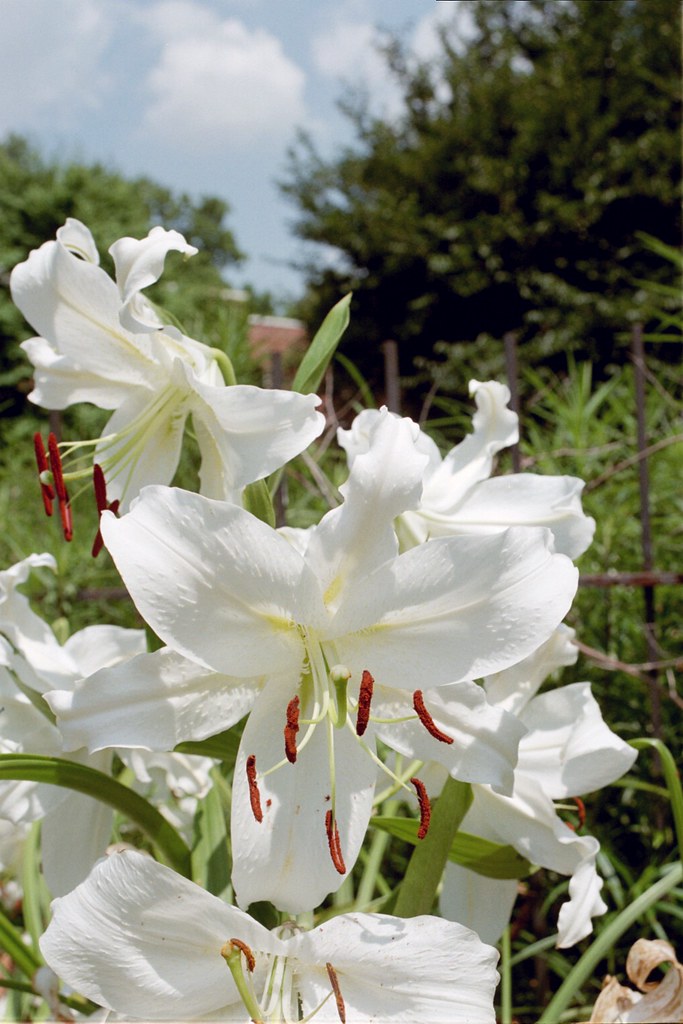Happy Pesach Seder
Tuesday, March 30, 2010
Wednesday, March 24, 2010
March Wrap-up: Myth, March Madness, Lent
Happy Spring Equinox!
Spring is here! Who’s not happy about that? Perhaps it was the turmoil of floods, blizzards, and earthquakes (oh my!) that had everyone restless and ready for some sunshine and play in the outdoors. Well, maybe that was just me. A good many bodies and eyes were glued to the TV watching the NCAA playoffs. Is it over yet? Aside from the disruption in some regularly scheduled programs, and the passionate status updates when brackets imploded from the various upsets, I didn’t partake in that excitement.
Myself, I was engrossed in introspective and reflective journey of Lent, namely how a casual commitment to abstain from desserts and sugary treats opened up an intricate negotiation of lifestyle changes. All that while balancing the external journey of discovery with a vicarious pilgrimage through Don Paulo Coelho’s so titled book. Both endeavors have been quite enriching as I continue to assimilate some of discoveries over the remaining days of Lent, and perhaps beyond. That leaves us free to discuss the unexplored aspect of our mixed bag of topics for this month--myth.
We engaged some interest in rediscovering myth and even invited the discovery of the great story of our present time. Generally, we defined the kind of myth we are referring to as the allegorical stories involving heroic human qualities or awesome display of supernatural forces that convey a teaching or lesson applicable to the human condition. For example, some of the interesting facts shared about St. Patrick’s life seem imbued with the quality of myth. St. Patrick’s identification with Ireland sounds like one of the ways we are initiated into mystery, he was literally swept up into a life changing event. This is perhaps the least desirable way to be initiated into a transcendent life, but it happens often in the great stories. The rest of the his story, how he transcended, the mystical experiences, prescient dreams, and how he used a commonly known aspect of life in Ireland, the shamrock, to explain the holy trinity all congeal into a story that becomes larger than the ordinary life of Maewyn Succat (St. Patrick).
While we suggested taking a look at the mythical underpinnings of current cinematic releases, the completion of The Pilgrimage (Paulo Coelho) struck the right note for this week’s discussion. Granted many readers have already discovered Don Coelho’s great stories, and his latest book is pending release, but some of us might have to wait until 2011 to discover it’s secrets. Nevertheless, the available Coelho collection has the key elements of what we need today. First, the language, cadence, and literary devices the author uses to weave the twists and turns of the transformational journeys of its protagonists, himself included, is nothing short of spellbinding from start to finish. As well, the hero lives, at least in the tales I’ve read so far, which is good for today. While the lesson of having a willingness to give one’s life for something profoundly meaningful or heroic is admirable, most people simply need some inspiration to make every day life more satisfying. That is one of the more common uses of storytelling through the ages--a way to convey a deeper, transcendent meaning of the mundane events and complex attitudes of life. In some ways, mythology is an early forms of psychology, spirituality, and influence.
Carl Jung, one of the most prominent contributors to modern psychology, did us a world of service by looking beyond the psycho-sexual emergence of the science. By recognizing the anthropological and universal relevance (archetypes) in the legends and myths of world culture we are given a chance to sneak past the rigidity of rational thinking into the creative and meaningful landscape of the psyche or soul. Likewise, much of the enchantment of Don Coelho’s ability to mesmerize s with his delightful journeys has to do with the ability to expertly weave and superimpose the engagement, frustration, and redemption of his characters with cultural anecdotes and legends of historical relevance of their locale. Don Coelho’s magic, fortunately for us, is that he discovered and developed his gift for seeing the things we might miss in our daily grind, and gently penetrating our preoccupied minds to deliver a poignant lesson with all the gentleness and caring of a favorite relative or family friend.
The four books selected by Don Coelho for a real life quest, The Challenge, each answer a fundamental dilemma that the central character seeks to resolve. You find these characters in the midst of very mundane circumstances before they are swept up on a tortuous quest, over time and space, or in the inner space of character. Throughout their pursuit you, the reader, are engaged with the author’s penetrating insights peppered into the narration. It may be these surprising perspectives which draws the popularity of author. In Brida, we witness a young woman seeking guidance or reassurance in choosing a direction in life. She finds what she needs as she resolves the questions of her past. Again, in The Devil and Miss Prym we find another young woman living in quiet desperation of a staid country life until a mysterious traveler presents her with a Mephistophelean scheme. The battle of good and evil that unfolds is almost elegant in its tragedy. Certainty gives way to frustration, frustration to certainty which gives way to unexpected tragedy for the young woman in By The River Piedra I Sat Down And Wept as she is swept along an impromptu adventure with a childhood friend. Her heartbreak was perhaps the most cruel tristesse I’ve ever witnessed as she succumbed to the seduction of her friend’s proposal and apparent celebrity, then have her nascent fancy perplexedly dashed coldly by his apparent self-absorbed thoughtlessness.
Though I’ve presented the books in reverse order as I happened to have read them, The Pilgrimage is actually the first and more intimate publication by Don Coelho. Brida and Miss Prym made for lush, quick reads, then the increasing complexity from Piedra to The Pilgrimage became a more thoughtful, analytical pace, perhaps showing the struggles of the emergent style. The books featuring the female protagonists largely concern the authors captivation with the divine feminine in Wiccan culture (Brida) and the Catholic icon the Virgin Mary (Piedra). The Devil and Miss Prym and The Pilgrimage both have a more masculine drive.
The important thing to note, though, is that beyond the fascinating imagery and anthropological anecdotes these are timeless classics for discovery by readers of all ages. Ultimately, Don Coelho chides us into thinking, what are we making our individual and collective reality to mean? Our history serves us not as models of superlative perfection, but as reminders and inspiration for how to be present to what life is calling forth from each of us right now. Are you willing to take that journey?
Wednesday, March 17, 2010
Myth, March Madness, & Lent: Sweet!
Happy St. Patrick’s Day!
Self correction: March Madness has little to do with St. Patrick‘s Day as implied in the previous blog post. Rather it is derived, according to one source, from the "synchronized frenzy of fans" during the tightly scheduled season of women and men’s college basketball championships. Shucks! I so prefer the amusing Python inspired image of raucous drunkenness and running amok.
And a twist on St. Patrick‘s day: While the commemorative day for St. Patrick has become synonymous with “Erin go bragh,” Irish nationalism, St. Patrick (not his real name but the general locale he‘s associated with) is actually not a native of Ireland. Gosh, this feels like the Grinch (that green-hued curmudgeon famously associated with Christmas) of St. Paddy’s day, but it yields some surprising insights. St. Patrick was kidnapped as a child and taken to Ireland where he was forced into child labor a herdsman, the unpaid variety.
Working as a herdsman (see the link to biblical shepherds) seems conducive to mystical experiences, probably because of the abundance of time afforded for contemplation and prayer. The then future saint (awkard, but you get what I mean) reportedly spent much time in prayer during his captive sojourn. He is said to have experienced ecstatic communion with God during that time, and finally escaped to freedom after a foretelling dream of his escape from captivity.
On returning home and reuniting with his family he entered the priesthood and after another prescient dream decides to take his ministry to Ireland. St. Patrick worked his ministry of religious conversions using the 3-leafed shamrock to describe the Holy Trinity. (Another departure from popular custom that uses the “4-leafed” shamrock associated with leprechauns and “luck of the Irish.”) His devotion to the “enslaved and unfree” (Wikipedia said that, but surely a motivation from his own life experience) might make him the patron saint of captives and anti-human trafficking activists everywhere.
So when you raise a "greenie" to the real St. Patrick this holiday will also be making a pledge to liberty and freedom for all. (I know you might be thinking “green beer,” that works too, but in some places it’s a specific beer, if you know what I mean.)
Sweet Life Balance
So last week our principal (only) blogger (I'll stop saying that soon) made a public commitment to give up dessert and sugary treats for 40 days. This is hardly what the spiritual practice of Lent is about, but it counts for making a step towards mastery of greater sacrifices in life. For one thing, if done mindfully, the intention to give up one small thing for 40 consecutive days of the year, can really open up a vista of unexamined thoughts, beliefs, and habits in life. In the personal example of giving up dessert and sugary treats, the first thing that presented was how to define what was dessert, and what was a sugary treat. The conclusion was that the attachment in question was not the food itself but the taste of sweetness. Our question then evolved to understanding the taste of sweetness and how we become attached to it?
The Problem of Definition. To find out more about the taste of sweetness--the sweet life--we reviewed what was being said about ‘sugar-free’ diets versus “sugar cravings.” The term ‘sugar-free’ itself is relative because the body converts ingested food into glucose--a form a sugar that can be absorbed and metabolized by the body. Thus, to properly define what is meant by ‘sugar-free’ our definition needs to be restricted to foods without added refined or process sugars from raw foods such as cane, corn, beets. In contrast, sugar cravings--a particular desire for sweet tasting foods and simple carbs is quite another thing. It is entirely organic, that is, it is a self-generated signal from the body, much like hunger, fatigue, that is tied specifically to the experience of the taste of sweetness because of how we habitually respond to the signal. Why bother with making the distinction? Well, enjoying sweet or sugary foods is not a problem of itself. Neither would the craving of a sweet treat mean the end of the world. But here’s the kicker, try giving up your favorite sweet or sugary foods for a while and see what happens.
The Problem of Definition. To find out more about the taste of sweetness--the sweet life--we reviewed what was being said about ‘sugar-free’ diets versus “sugar cravings.” The term ‘sugar-free’ itself is relative because the body converts ingested food into glucose--a form a sugar that can be absorbed and metabolized by the body. Thus, to properly define what is meant by ‘sugar-free’ our definition needs to be restricted to foods without added refined or process sugars from raw foods such as cane, corn, beets. In contrast, sugar cravings--a particular desire for sweet tasting foods and simple carbs is quite another thing. It is entirely organic, that is, it is a self-generated signal from the body, much like hunger, fatigue, that is tied specifically to the experience of the taste of sweetness because of how we habitually respond to the signal. Why bother with making the distinction? Well, enjoying sweet or sugary foods is not a problem of itself. Neither would the craving of a sweet treat mean the end of the world. But here’s the kicker, try giving up your favorite sweet or sugary foods for a while and see what happens.
A funny thing happened… Remarkably, giving up sugary foods seems to heighten or refine the taste buds for sweetness. After just three weeks, “unsweetened juice” that beforehand just tasted tart, now have surprising nuances of flavor and yes, sweetness. And if you can imagine, everything sweetened now seems garish. Yes, ga-rish, a veritable assault on the senses (Egad! Still swooning from that.) So now the question of sugary versus sweet became an imperative to know better how much sugar is added to what we eat, and even more intriguing where it’s been added. On top of that, the refined sweet taste buds seemed to have nothing to do with that particular need to have a taste of sweet to complete the meal. What is that about?
Another striking development is how we might substitute sugary and sweet foods, sometimes in the form of other cravings. What are your sugar alternatives? Some fruit (fresh or dried), veggies, nuts, bread, French fries? Are you feeling more tired, edgy, out of sorts? These are all natural reactions to reducing your sugar intake. How so? Because giving up sugary foods has both an organic and behavioral component.
Jack in the Box. It seems now that the path to Sweet Life Balance (tagging convenience) is two-fold. Sweet Life Balance starts with knowing what foods are high in sugar content and simple carbohydrates (the Glycemic Index), and it can also be an understanding the organic desire for sweetness, the sugar craving.
The Glycemic Index
 To understand the sugar content in foods it is best to take a look at the Glycemic Index. Basically, the Glycemic Index promotes health factors through nutrition, specifically nutrition factors that determine how quickly food is absorbed and metabolized in the body. Shown in a hierarchy from low to high, foods ranked as low glycemic are absorbed and metabolized slowly in the body and promote sustained metabolic functioning. Foods ranked as high glycemic are quickly absorbed and metabolized and promote quick metabolic functioning.
To understand the sugar content in foods it is best to take a look at the Glycemic Index. Basically, the Glycemic Index promotes health factors through nutrition, specifically nutrition factors that determine how quickly food is absorbed and metabolized in the body. Shown in a hierarchy from low to high, foods ranked as low glycemic are absorbed and metabolized slowly in the body and promote sustained metabolic functioning. Foods ranked as high glycemic are quickly absorbed and metabolized and promote quick metabolic functioning. This is important knowledge because as noted before, simply cutting out refined and processed sugars may not be enough. Our own bodies might trick us into substituting those obvious sweet treats with other foods that are equally or even higher in sugar content once it’s broken down in the body. As well, throw in some gender factors, like the need for healthy fat and complex carbs in women’s diets, and suddenly one feels unprepared for the journey that began so offhandedly. Forewarned is forearmed. Be encouraged because this has now become a lifestyle revolution, not just a 40-day time out.
The endocrine triad--the neurohormonal influence
Next, for a better understanding of the desire for sweetness one source pointed to the endocrine system for the source of cravings, specifically the production of serotonin and adrenaline. Sugar cravings is a signal from the cells in the body to the brain that it needs fuel, glucose. Generally, our bodies will convert fat stored in the body, even the proteins in the muscles, into glucose to maintain its function. This is the sign of healthy metabolic functioning. However, certain conditions might confuse and interfere with this process and create a problem that may spiral out of control. The main conditions implicated are weak digestion, insulin resistance, and low adrenal functioning.
First, weak digestion may be the result of poor nutrition, typically foods that are low fat and high in simple carbohydrates (see the Glycemic Index.) Basically, you may be eating more in order to derive the quality nutrients the body needs to function. Regardless of the underlying cause of weak digestion, something that can be pinpointed by your healthcare provider or nutritional expert, it can lead to the other factor implicated in the body’s sugar cravings, insulin resistance. Insulin resistance occurs when the body stops responding to the body’s regulator for absorbing and releasing glucose to and from the bloodstream, insulin. This sets off a vicious cycle of persistent signals for more fuel which only gets stored in the body’s fat cells instead of being converted into energy to support metabolism.
The third factor which ties in with the metabolism is adrenal functioning. Some sugar cravings may be the result of prolonged stress, insomnia, sleep deprivation, and inflammation. Essentially all stress be it from bona fide lifesaving responses, or from ordinary pressures in living, as well as and chronic health conditions that cause inflammation is interpreted as a threat response--fight or flight. (Get this, food allergies is a contributing factor by causing inflammation.) And even further, too much sugar depletes the body of B vitamins which paradoxically it needs to combat stress. Oy! This is getting to be like an episode of House but it underscores the value of differential diagnosis! It is so important to work with your healthcare professional or nutritional expert to troubleshoot and determine a personally effective treatment plan.
A final note on the neurohormonal influence: understanding how taste, cravings, and choice may form unintended habits. The key is serotonin which is readily induced by sugars or high glycemic foods. Quite simply, serotonin, one of the body’s feel-good endorphins, when induced by ingesting sugary or simple carbs becomes complicit in forming a reward system that reinforces unhealthy habits like choosing a candy bar instead of an apple. While high GI foods (quick absorbing and metabolized foods) might be a smart choice in conditions demanding high energy responses from the body, they can produce unacknowledged consequences in relatively normal situations. Awareness and knowing the difference is important. (Emphasis on knowing what works, for some a hard candy can be lifesaving, for others, its a self-defeating option.)
Sweet Life Balance: Return to Eden. The good news is that once we’ve determined how sugary foods and simple carbohydrates may be impacting our lives the remedy can be quite simple and have healthful benefits. As a preemptive choice, reducing or eliminating refined or processed sugars, plus the selective use moderate to high glycemic foods along with moderate exercise can add years to your life. Each of these recommendations targets one or more of the key factors in regulating your sugar/simple carbs.
- The first is nutritional support like multivitamins supplement healthy food choices using the Glycemic index. Also recommended are nutritional formula to support adrenal functioning, control inflammation, and aid digestion. This will assist in reducing hunger and sugar cravings--translate this you will feel the need to eat less, and less often. A win-win solution if there’s ever been one.
 Second, is nutrition itself--what you actually eat. Already this is a great thing because there is no need to use that four-letter word (d-i-e-t.) You can eat foods you enjoy, only selectively, based on low to high glycemic content and corresponding to your level of activity. This also supports reducing or eliminating foods with high content of refined or processed sugars. Based on personal experience, that everything tastes sweeter insight, you will find more enjoyment and satisfaction in eating an apple instead of an apple turnover. (Hmmm…seems like “the everything tastes sweeter” factor reverses the reward system involved in the old habit of sugary treats. The very memory of that garish experience of sweetened anything is punishment enough. A mental cross-eyed, gagging effect. Wooo! I’m okay. Really…)
Second, is nutrition itself--what you actually eat. Already this is a great thing because there is no need to use that four-letter word (d-i-e-t.) You can eat foods you enjoy, only selectively, based on low to high glycemic content and corresponding to your level of activity. This also supports reducing or eliminating foods with high content of refined or processed sugars. Based on personal experience, that everything tastes sweeter insight, you will find more enjoyment and satisfaction in eating an apple instead of an apple turnover. (Hmmm…seems like “the everything tastes sweeter” factor reverses the reward system involved in the old habit of sugary treats. The very memory of that garish experience of sweetened anything is punishment enough. A mental cross-eyed, gagging effect. Wooo! I’m okay. Really…)- And third, increased physical activity. Don’t even call it exercise, unless you want to. We’re talking about more and focused movement. Couch potato? Then just get up and walk about for 10-minute intervals. Workaholic--try 10-minute intervals of power or energy yoga postures. More importantly, target the core muscles: work the abs, back, and upper body.
Yes, good to go. We’ve covered enough for this post so let’s look forward to some mythic musings next week. We might share impressions of the cinematic release, Percy Jackson and the Olympians. Hopefully there won’t be any trifling whistle tooting Pavlovian parodies in that.
May the sweetness in your life be in your memories
of a particularly good time this week.
Tuesday, March 9, 2010
March: Myth, March Madness and Lent
Seriously now. Let’s start with Lent since that is already on the way. For those unfamiliar with this religious practice, it is a season beginning mid-February, just after Mardi Gras, with Ash Wednesday, a solemn ceremonial commitment to the 40-day journey of personal sacrifice. Lent precedes the redemptive celebration of atonement and renewal on Easter Sunday, usually in early April. As a matter of practice, to participate in Lent, a person takes a vow of fasting and sacrifice. In present day practice, fasting seems optional, but the sacrifice of something to which one has a particular attachment or penchance is how it is observed. For example, a certain blogger (ahem) self-observed an almost Pavlovian ritual of ‘dessert’ with lunch and dinner. To say been ‘dessert’ is subjective, because the attachment is not so much for sugary treats as much as it is for a taste of sweetness. The observation was made in seeing that a meal did not feel complete until it was capped with a swig of fruit juice, fruit, or sweet treat. So the Lenten journey is to better understand the imperative desire for sweet in juxtaposition with salt, sour, pungent, and bitter.
While on the subject of Lent which is largely a Catholic tradition, a new question popped up. The question concerned another tradition, the celebration of St. Patrick’s Day. St. Patrick was an Irish saint in the Catholic tradition although the celebration, also known as March Madness, is a matter of national pride, “Luck of the Irish.” So if March Madness which is synonymous with raucous drunkenness and running amok (so Monty Python) is really a commemoration for a Catholic saint, would it not be ‘sacrificial’ to give up the ‘sauce’ for the Lenten period as a real show of piety? I guess that depends on whether or not you have a particular attachment to beer and alcohol.
Finally, myth. In this case, when we talk about myth we are not referring to old wives’ tales, urban legends, and all things debunkable. Rather, we’re talking about great stories that take us on an inward journey through the imagination to teach, enlighten, and inspire. Great myths are stories that connect the individual to a community and the noetic, something larger than ourselves. The story can be anything from the epic of a great battle, the uplifting of the mundane to nobility, the conquest of a great or fallen hero. No matter which is relevant for the time, myths are important to life and living.
Despite the overwhelming wonder of spellbinding visuals, Avatar fell short of being that great story for our time because of one small detail, the hero gives up his own life to assume something he is not. It’s not quite the same as the explorer who is himself but learns to connect with a strange and foreign culture. Basically, the search for that great transformative story for present times is still on. I’m optimistic.
We promised lite, and lite it is. Have a great week!









